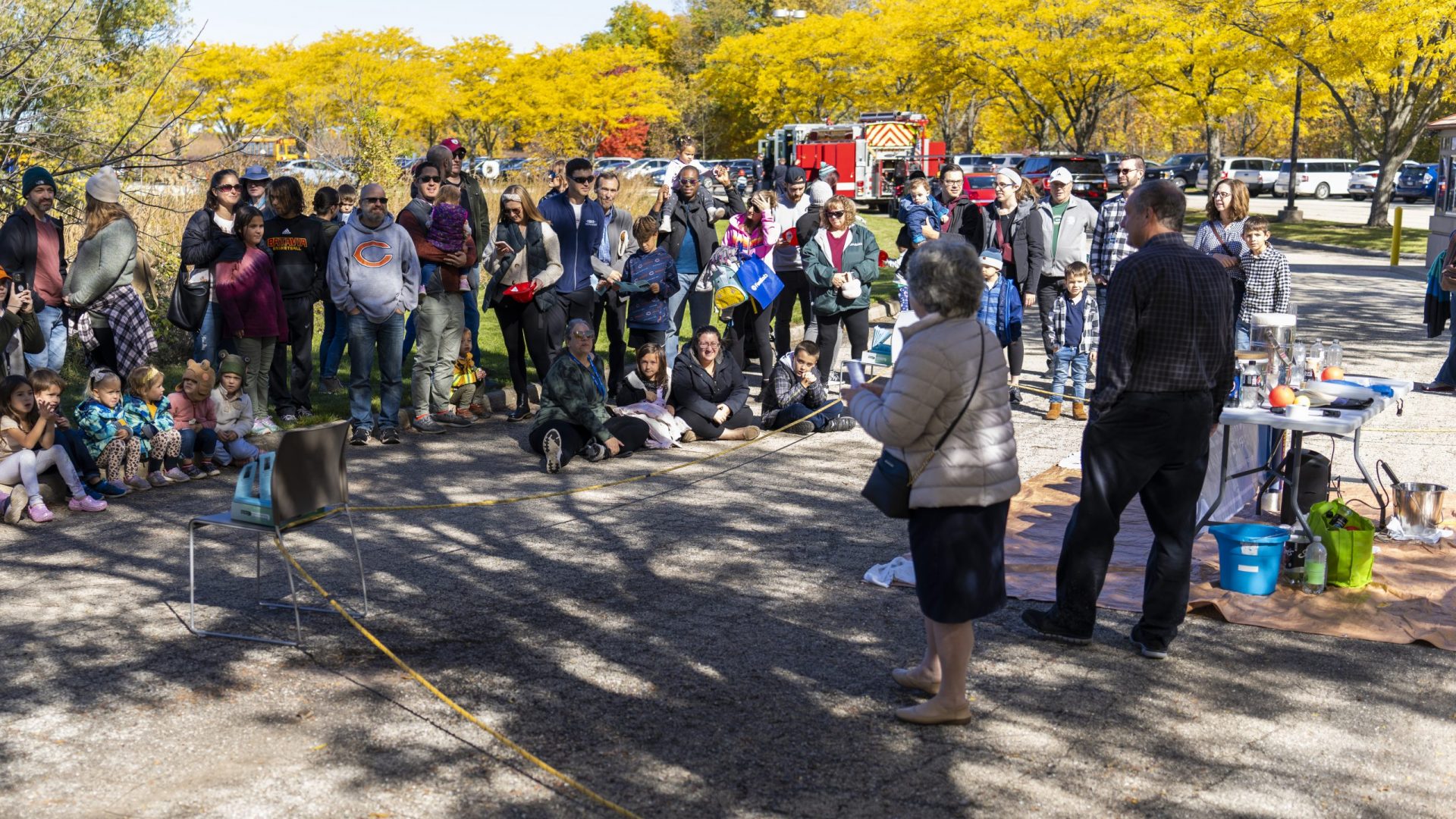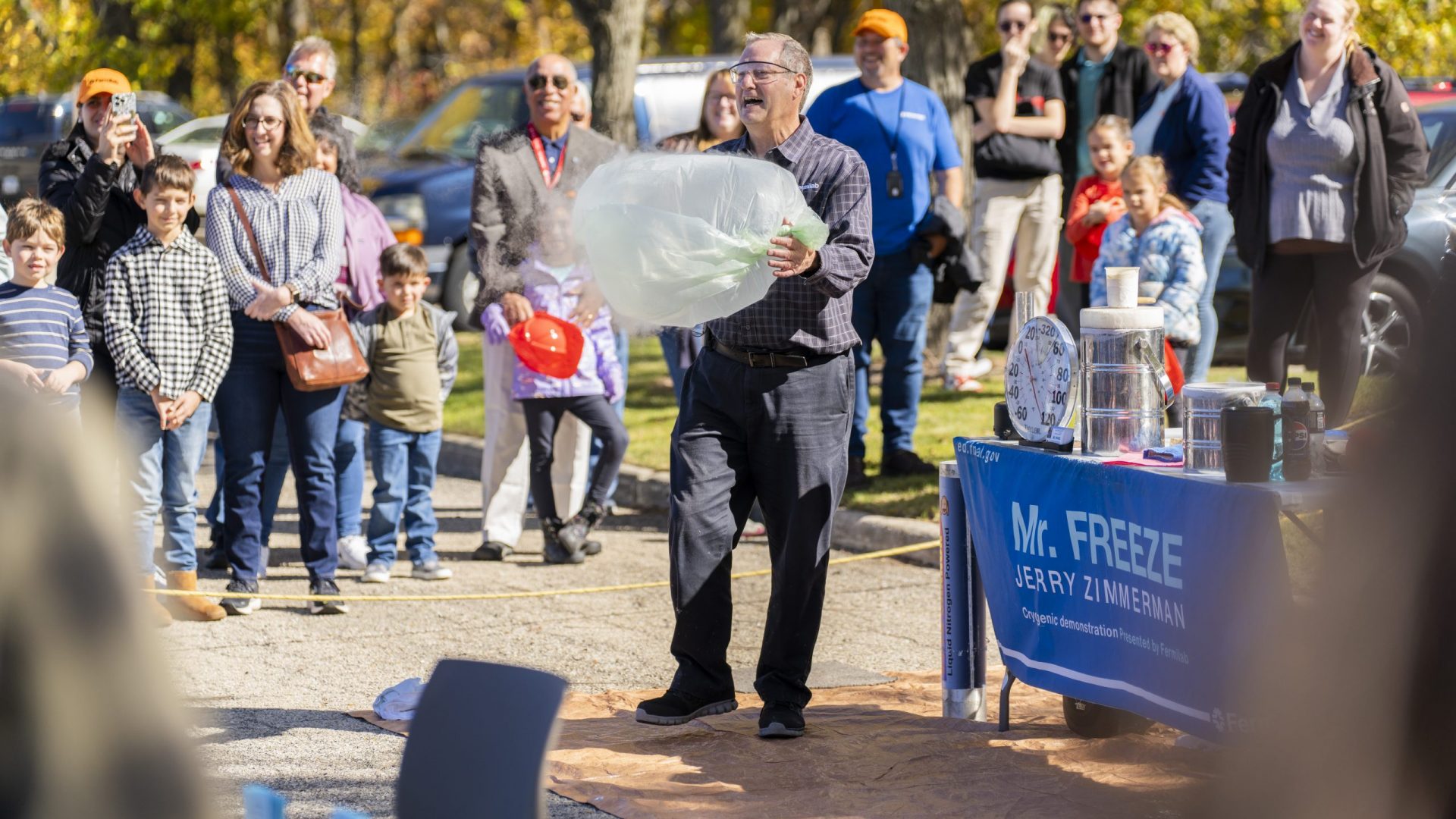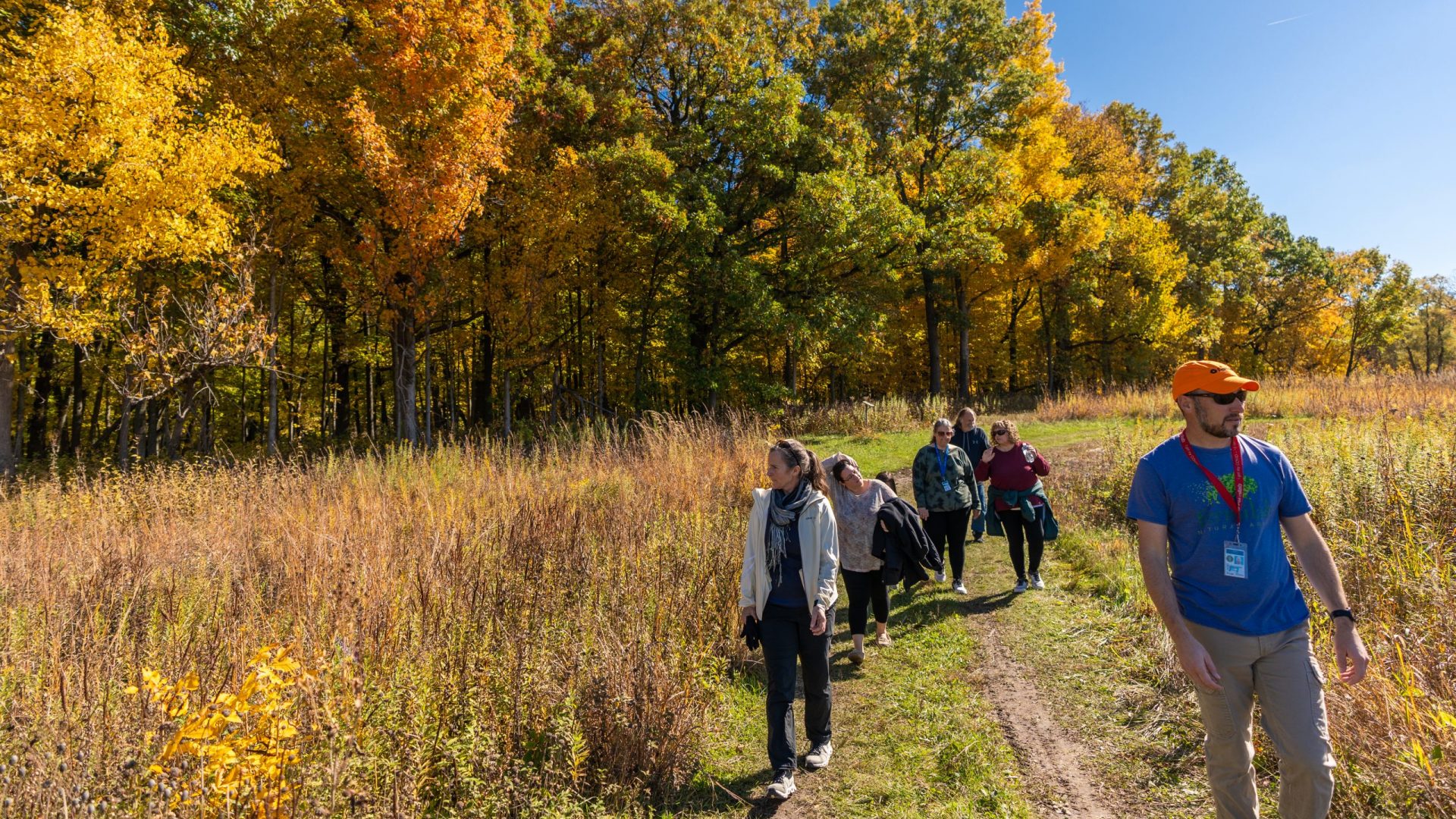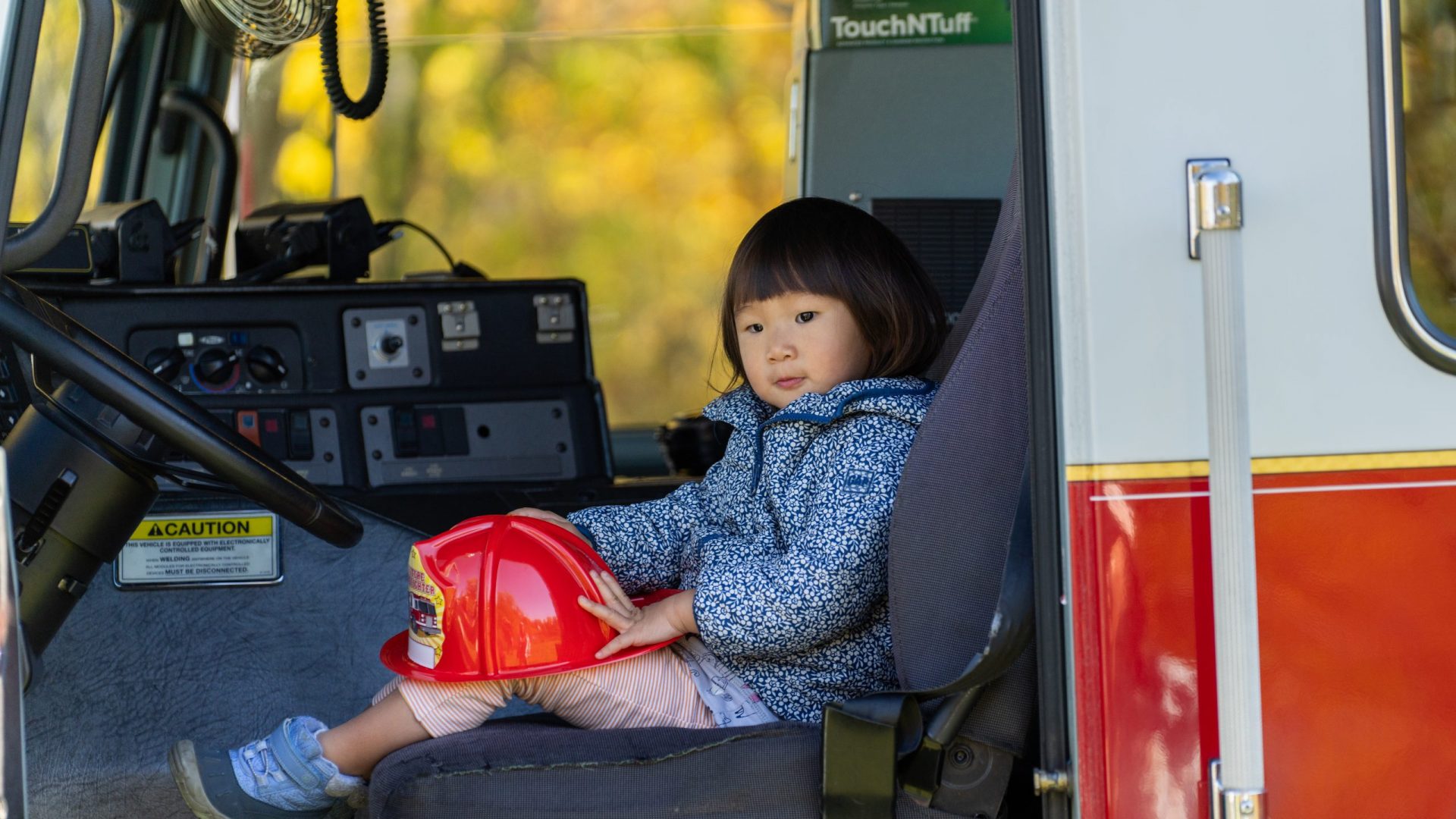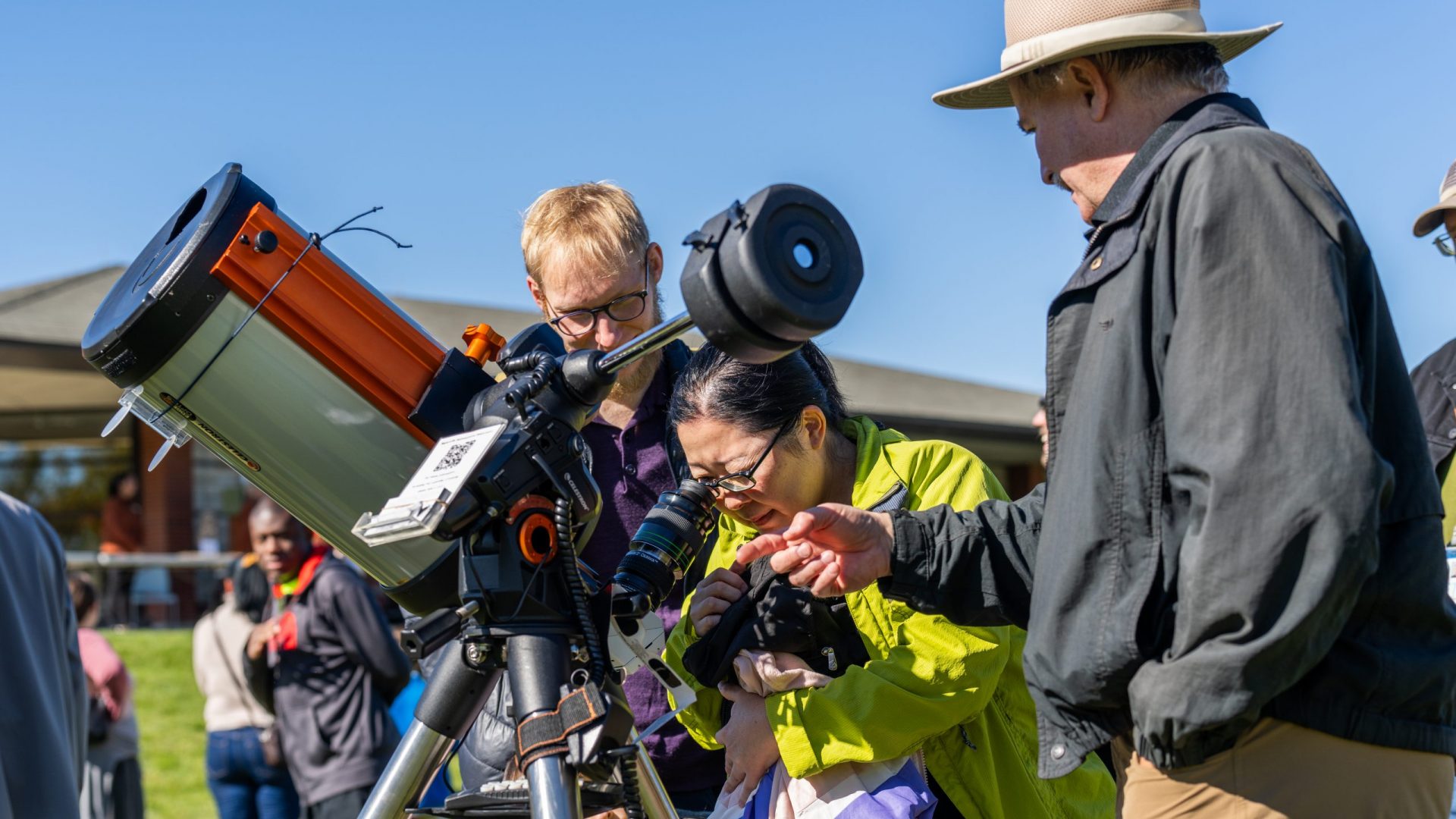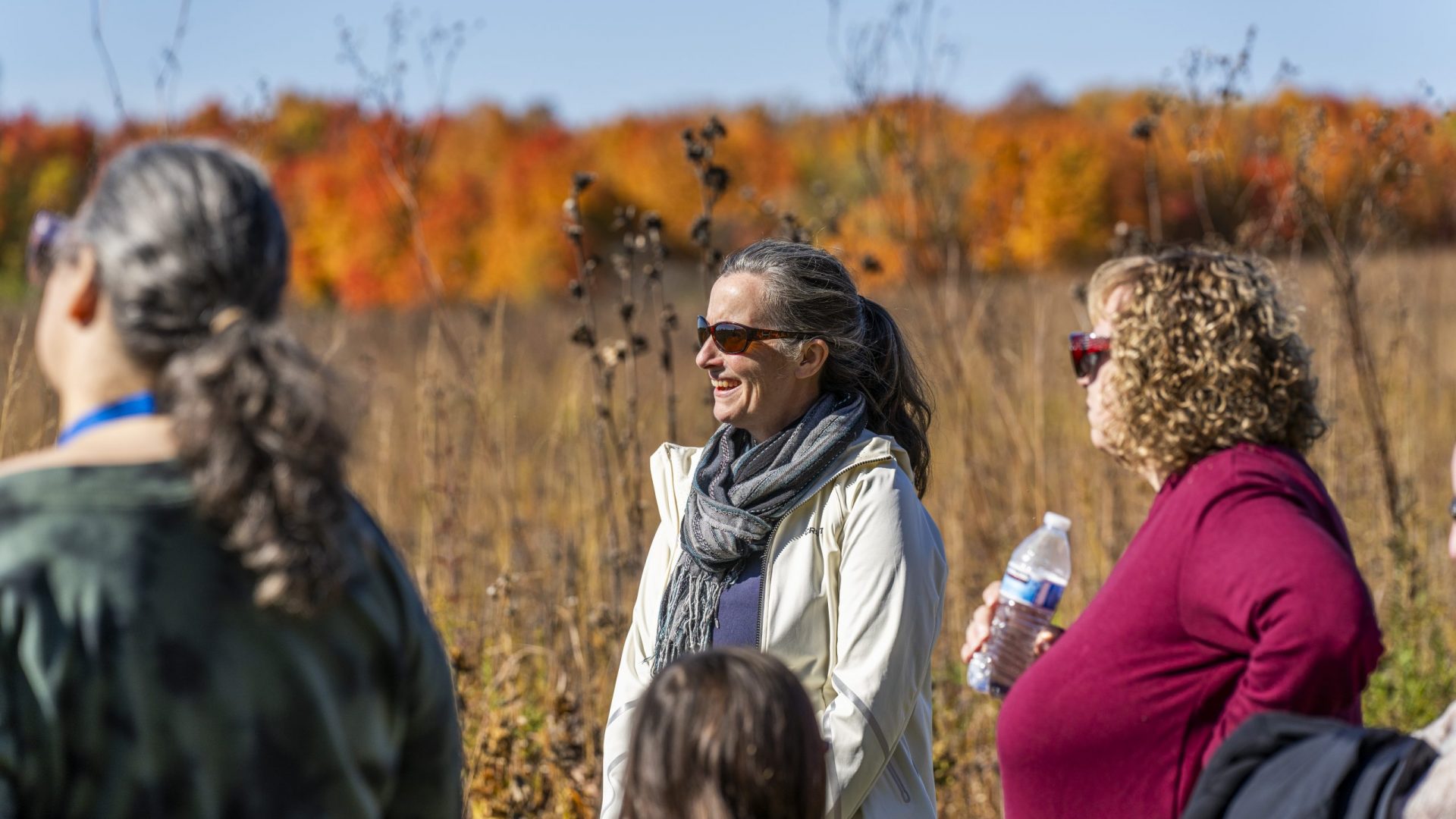Although firefighters in the Chicagoland region train extensively to fight fires in buildings, they don’t often train for fires erupting in natural areas, especially with live fires.
In early November, the U.S. Department of Energy’s Fermi National Accelerator Laboratory hosted the three-day training on combatting wildland fires. With more than 50 people attending this training, eight different municipalities and four conservation forestry groups from Cook, Will and DuPage counties were represented. Run by the Illinois Fire Service Institute, the Statutory Fire Academy for Illinois at the University of Illinois Urbana-Champaign trains more than 60,000 first responders across the state.
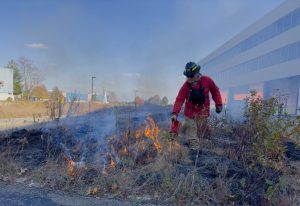
A firefighter conducts a prescribed burn on the Fermilab campus. Photo: Caitlyn Buongiorno, Fermilab
“We are thankful to Fermilab for opening their doors to our firefighters,” said Tom Richter, the wildland/prescribed fire program manager at IFSI. “Training is an essential part of being a firefighter, and allowing structural firefighters to train in wildland fire settings creates a safer Illinois.”
Wildlands are uncultivated sections of land set aside as a protected wilderness area, and fires in wildland settings can be caused by lightning or by people. Structural firefighters are trained to extinguish fires in buildings where they often have access to fire hydrants.
“In wildlands, we’re out in the open; there are no fire hydrants. So, in essence, the fire engines become the fire hydrants,” said Steve Hernandez, the fire chief for Fermilab’s Fire Department.
“Firefighters also fight wildland fires with fire by burning large areas to take away the fuel,” Hernandez said, “or we use tools to clear the lands and create a break between the area that is burning and the area that has not been affected.”
During the course, the firefighters learned about the basics of wildland fires and fire safety. The training covered the types of topography that can influence wildfires and how different plants can fuel the fires. They learned how weather and especially unpredictable winds can pose challenges for wildland firefighting. As live fires were used in Fermilab’s wildland areas for this training, preparation was essential and involved careful coordination with Fermilab’s ecology team.
Fire as a useful tool for ecological maintenance
Fermilab has more than 6,000 acres of land—10 square miles—with a large section that includes restored prairie, woodlands and other ecosystems. Intentional, controlled fires known as prescribed burns are one of the most effective land management tools to help Fermilab’s natural areas thrive. Fermilab’s ecology team regularly conducts prescribed burns on site in the spring and the fall, which made the lab an ideal place to conduct the IFSI training.
“Fire is a disturbance that keeps woody plants out, like brush and trees, so repeated fires help maintain a healthy prairie,” said Wally Levernier, Fermilab’s ecologist.
Left unchecked, trees and brush create shade that can prevent prairie dependent plants from growing, which destabilizes prairie ecosystems by creating a domino effect that can negatively impact pollinators.
“One of the other advantages of prescribed burning is specifically for our invasive species management,” said Levernier. “Imagine going through a prairie that hasn’t had a prescribed burn on it in the spring and looking for little sprouts of invasive species between the layers of thatch from previous years’ growth.”
Prescribed burns create a clean slate to spot invasive species when they emerge and help provide room for native species to establish themselves.
The wildland fire training provided much needed maintenance for Fermilab’s natural areas, while also deepening ties between Fermilab’s fire department and the fire departments that serve the surrounding communities.
“Fermilab’s fire department frequently trains with our community partners,” said Hernandez. “Because of that, we can effectively coordinate our efforts to keep people safe when we do need their personnel and resources.”
Fermi National Accelerator Laboratory is supported by the Office of Science of the U.S. Department of Energy. The Office of Science is the single largest supporter of basic research in the physical sciences in the United States and is working to address some of the most pressing challenges of our time. For more information, please visit science.energy.gov.
The mission of U.S. Department of Energy’s Fermi National Accelerator Laboratory is to conduct experiments that push our understanding of the fundamental building blocks of matter. Part of that mission includes outreach to educate the public about the work done at the lab.
On Sunday, Oct. 22, Fermilab’s Office of Education and Public Engagement hosted its Outdoor Family Fair, which brought the public to the lab to enjoy educational activities about some of its science, as well as to get a close look at Fermilab’s diverse site. The free event saw more than double the turnout of the last Outdoor Family Fair, held in 2019.
Fermilab’s 6,800-acre campus includes restored prairies, a rich ecology and a prized herd of bison, all of which were on display during the 2023 Outdoor Family Fair. Other activities included the Northern Illinois Raptor Rehab and Education exhibiting live raptors. Attendees could participate in a lab timeline scavenger hunt to learn about Fermilab’s history and future. Mr. Freeze put on his always popular liquid-nitrogen show, and a demonstration of quantum entanglement taught guests about basics of quantum mechanics.
Moments from the 2023 Outdoor Family Fair:
Fermi National Accelerator Laboratory is supported by the Office of Science of the U.S. Department of Energy. The Office of Science is the single largest supporter of basic research in the physical sciences in the United States and is working to address some of the most pressing challenges of our time. For more information, please visit science.energy.gov.
To learn more about the early moments of our universe, astronomers must glean as much information as they can from faint, far-away galaxies. A scientist at the U.S. Department of Energy’s Fermi National Accelerator Laboratory has proposed a project to develop sensors that can pick up these faint signals, a concept for which DOE has recognized him with a 2023 Early Career Research Award.
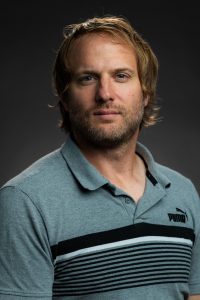
Astrophysicist Guillermo Fernandez Moroni received a 2023 DOE Early Career Research Award for developing next-generation sensors to study the distribution of far-away galaxies. Photo: Dan Svoboda, Fermilab
In August, DOE announced the recipients of its annual Early Career Research Program awards. This program supports the projects of researchers in the early stages of their careers who work at U.S. academic institutions and national laboratories. Two of the 93 award recipients this year are scientists at Fermilab, one of whom is astrophysicist Guillermo Fernandez Moroni. He will receive $2.5 million over five years to fund the development of next-generation sensors for studying the distribution of far-away galaxies.
Fernandez Moroni first began working with sensors at Fermilab as an undergraduate student in 2010. During his doctoral studies at Universidad Nacional del Sur in Argentina, he spent considerable time at the lab and subsequently joined Fermilab after completing his degree.
He has been working on silicon detectors that produce digital images for physics research. In the past, Fernandez Moroni has investigated using them for detecting neutrinos produced in nuclear reactors and for searching for dark matter. In recent years, Fernandez Moroni and his colleagues have been looking into the use of even more sensitive sensors in the field of particle astrophysics.
“Then, we started developing new sensors with new features, like more sensitivity,” he said. “Now they can detect fainter images; they can see things with a very low level of light.”
The aim of Fernandez Moroni’s upcoming project is to build new sensor technology for telescopes that use many, many optical fibers. Each optical fiber will point to an individual galaxy and detect the light coming from that galaxy. With tens of thousands of fibers, a telescope using this technology can survey tens of thousands of galaxies at the same time.
“The idea for this particular instrument is to speed up the galaxy survey compared with existing instruments,” said Fernandez Moroni. “That means that every time you point to the sky, you need to have many fibers pointing to many objects.”
The light from the fibers leads to a spectrograph that separates the light into different wavelengths. Different elements and molecules each absorb and emit light at particular wavelengths, so identifying how these absorption and emission lines from a galaxy are shifted in the spectrum when the light is collected from the earth reveal its motion and position in the universe.
Fernandez Moroni’s new sensors would be extraordinarily sensitive to faint light. When looking at a galaxy very far away, only a fraction of its light will reach a telescope on Earth. To gather enough light from the galaxy to effectively discern the features in its spectrum of light, these detectors must be highly sensitive.
“That’s where the work that we have done in the lab comes into play,” Fernandez Moroni said. “We have developed very sensitive sensors, and now they can increase the science reach to these very faint objects that are far, far away.”
These optical fibers have to be precisely pointed at their respective galaxies, though. The Early Career Research award also will fund the development of robotic positioners that can move the fibers into position. Each fiber will need its own piece of robotics to aim it at a galaxy.
“In order to see those 50,000 galaxies at the same time, you need to have 50,000 robotic arms pointing the fibers,” Fernandez Moroni said. “That is challenging: That means you have to increase the density of robots per area unit compared to existing technology.”
In the first two years of the project that will be funded by the award, Fernandez Moroni will lead a team that will test the sensors and fiber positioners. They will then construct and test the full instrument in the following two years. In the final year of the award period, they will install the instrument in a telescope so that they can collect and analyze data.
These improved sensors will aid the effort to map the structure of matter in the universe by recording the positions of all of the galaxies. The increased sensitivity will detect fainter light sources, while the individual optical fiber design will detect more galaxies at a time.
“If you want to map the universe’s structure much farther away compared to existing technology, you need to see much fainter objects, and that means you need very sensitive detectors,” Fernandez Moroni said. “If you want to map a larger volume of the universe, that means you have more targets. You cannot map the same number of galaxies with the technology being used now, and that’s why the speed should be increased.”
By surveying the galaxies from a larger volume of the universe, cosmologists can gather more knowledge about the expansion of the universe shortly after its birth.
“By looking at that larger volume, we can essentially go back in time to see how the expansion of the universe was working at the very beginning,” Fernandez Moroni said.
Fermi National Accelerator Laboratory is supported by the Office of Science of the U.S. Department of Energy. The Office of Science is the single largest supporter of basic research in the physical sciences in the United States and is working to address some of the most pressing challenges of our time. For more information, please visit science.energy.gov.


